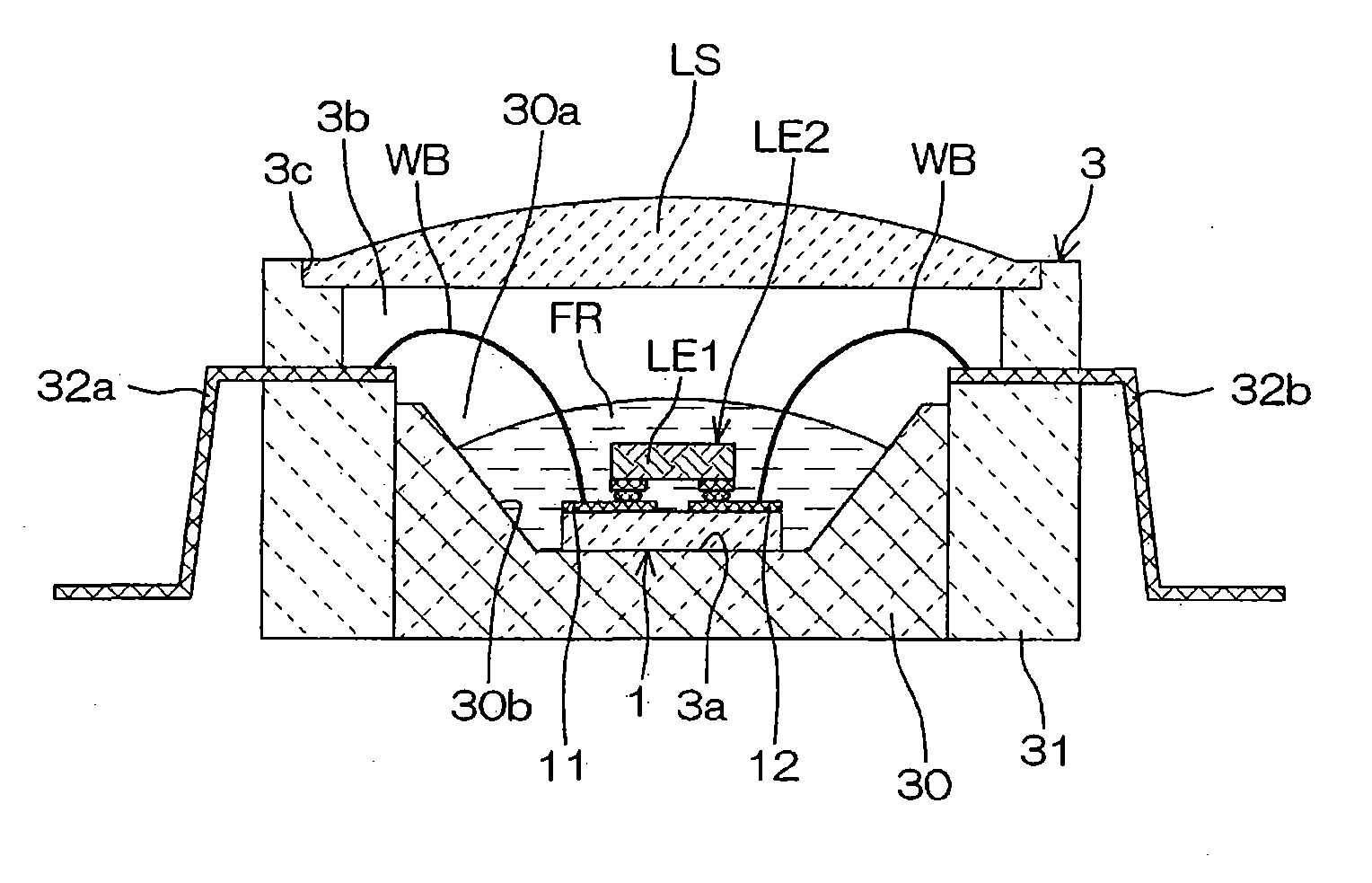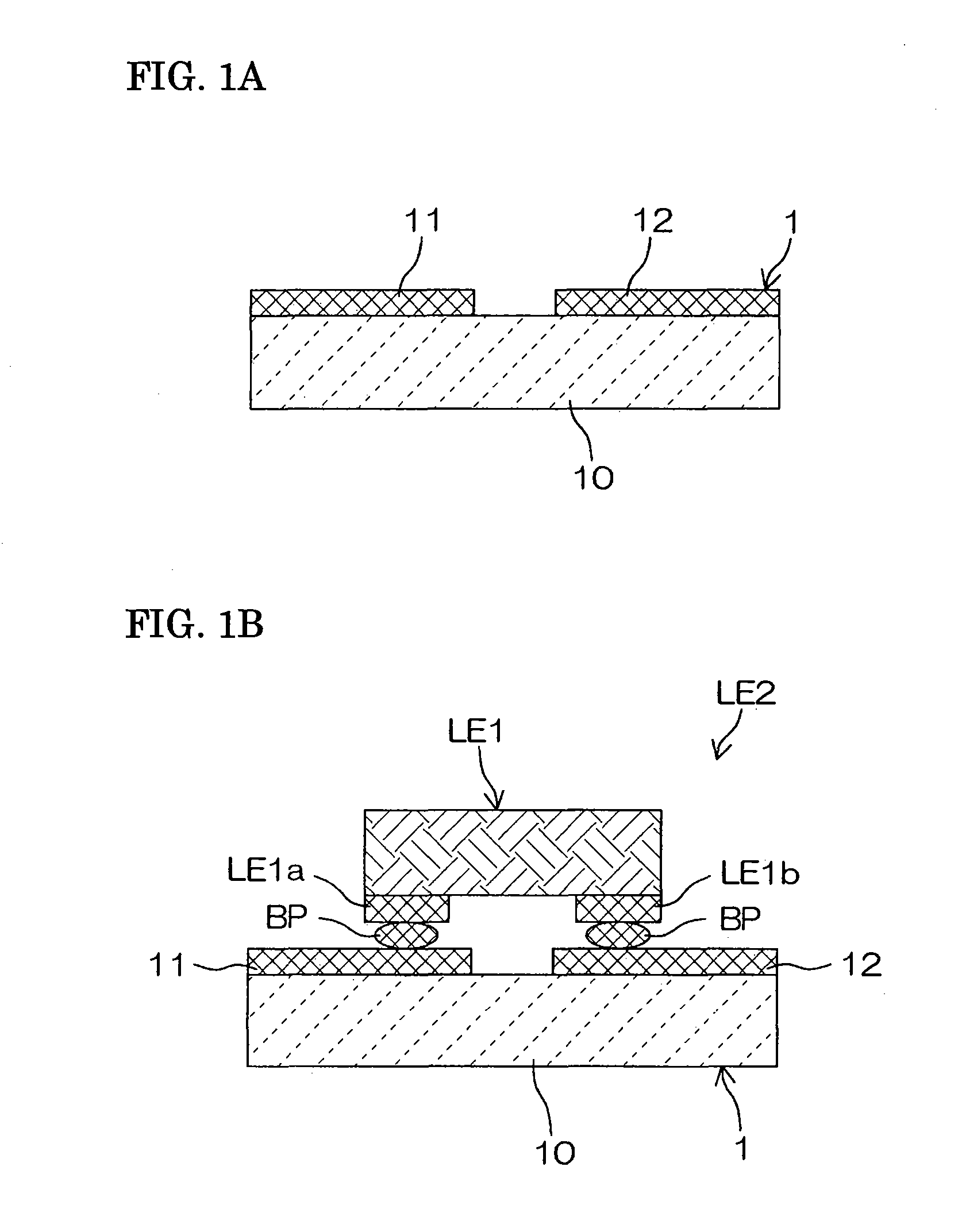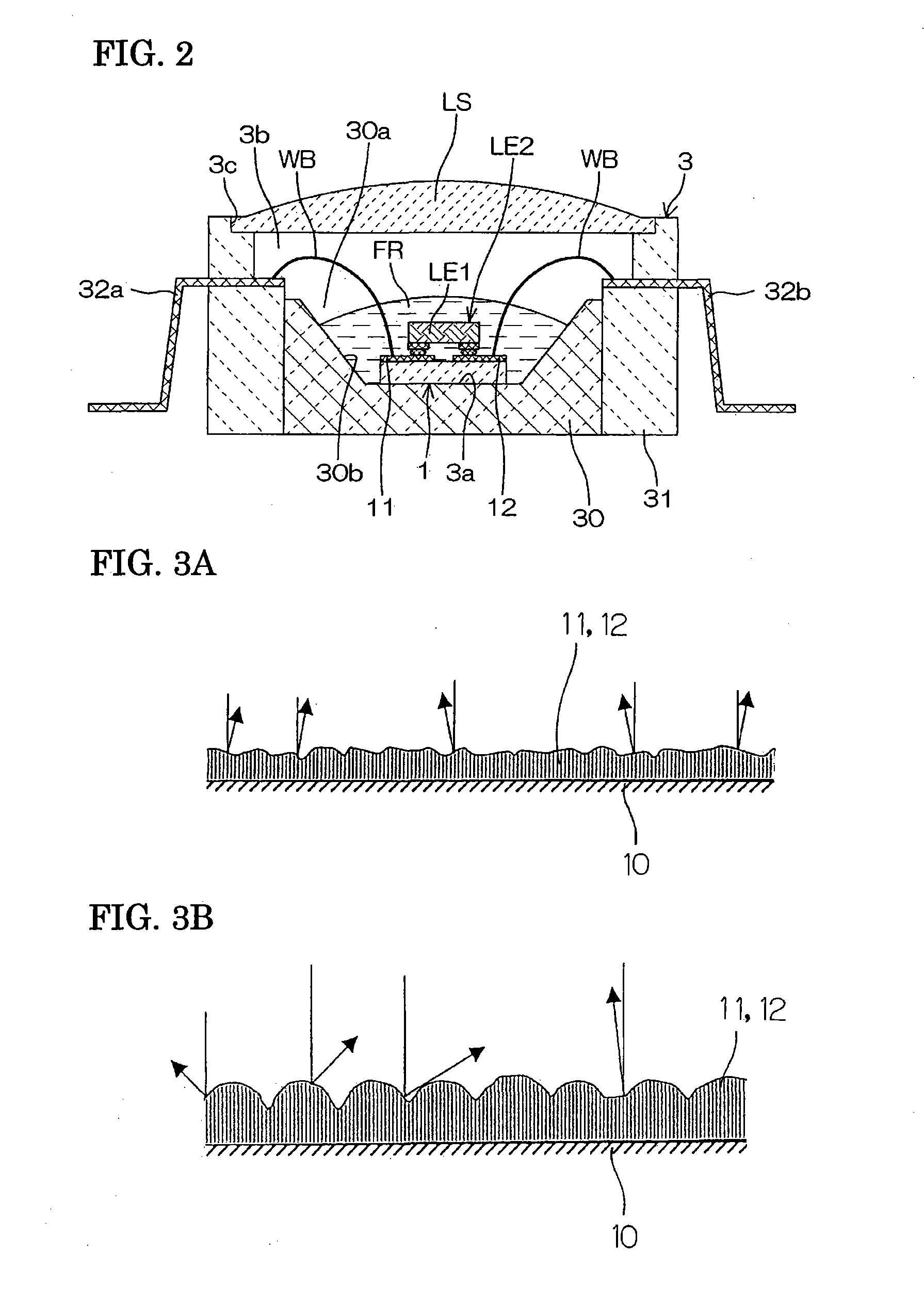Semiconductor light emitting element mounting member, and semiconductor light emitting device employing it
- Summary
- Abstract
- Description
- Claims
- Application Information
AI Technical Summary
Benefits of technology
Problems solved by technology
Method used
Image
Examples
example
[0103] The present invention will be described below using examples and comparative examples.
first example
[0104] Twenty substrates with a length of 50.8 mm, a width of 50.8 mm, and a thickness of 0.3 mm made from aluminum nitride (AlN) having a thermal conductivity of 230 W / mK and a thermal expansion coefficient of 4.5×106 / deg C were prepared. Lap abrasion and polishing were performed on both surfaces (main surfaces) of the substrates to apply a finish with a center-line average roughness Ra of 0.02 μm.
[0105] Next, as shown in FIG. 1A, vacuum vapor deposition was performed on a first main surfaces of the substrate 10 to form two pure aluminum films 11, 12 insulated from each other by a narrow gap on the planar center to form a submount 1 serving as the semiconductor light-emitting element mounting member. Film formation was performed as follows. First, on the first main surface of the substrates 10 were formed, in the same planar shape as the pure aluminum films 11, 12, a titanium adhesion layer having a thickness of 0.1 μm and a platinum barrier layer having a thickness of 0.2 μm, in ...
second example
[0108] Film-forming conditions were similar to those from the first example except that the substrate temperature was set to 80 deg C. On the first main surface of the aluminum nitride substrates 10 were formed a titanium adhesion layer having a thickness of 0.1 μm and a platinum barrier layer having a thickness of 0.2 μm. On top of this were formed the pure aluminum films 11, 12 having a thickness of 2 μm, to form the submount 1.
[0109] The mean particle diameter along the plane of the films of the aluminum crystal grains forming the pure aluminum films 11, 12 was determined using the method described above and was found to be 0.20 μm. Also, the mean value of the center-line average roughness Ra was calculated and found to be 0.042 μm. Also, light reflectivity was 88 percent, the die shear strength was 45 MPa, and the ball shear strength was 52 MPa.
PUM
 Login to View More
Login to View More Abstract
Description
Claims
Application Information
 Login to View More
Login to View More - R&D
- Intellectual Property
- Life Sciences
- Materials
- Tech Scout
- Unparalleled Data Quality
- Higher Quality Content
- 60% Fewer Hallucinations
Browse by: Latest US Patents, China's latest patents, Technical Efficacy Thesaurus, Application Domain, Technology Topic, Popular Technical Reports.
© 2025 PatSnap. All rights reserved.Legal|Privacy policy|Modern Slavery Act Transparency Statement|Sitemap|About US| Contact US: help@patsnap.com



